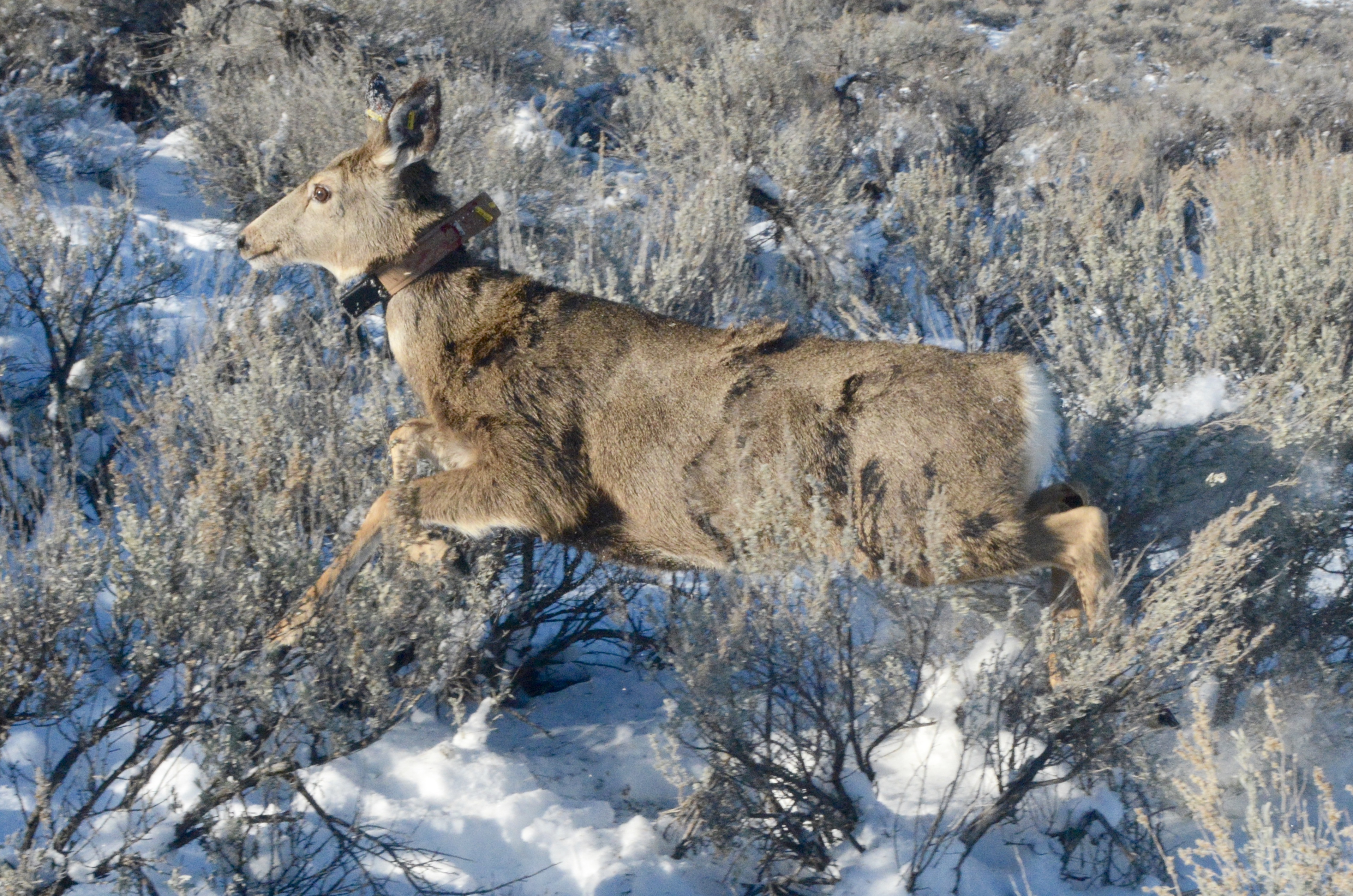Despite February storms that battered much of Idaho and pushed snowpack and precipitation above average in most areas, radio-collared young fawns and elk calves were faring relatively well across the state through the end of February.

Idaho Fish and Game biologists have been monitoring 207 mule deer fawns and 201 elk calves captured earlier in the winter and fitted with telemetry collars.
Through the end of February, 78 percent of the collared fawns and 94 percent of the calves were still alive. That compares with 88 percent of the fawns and 97 percent of the calves surviving through February in 2017-18, and 55 and 80 percent in 2016-17.
While snowpacks and precipitation totals are above average for most of the state, the late arrival of winter weather in 2019 has made for an easier winter for big game than in 2016-17, according to Daryl Meints, State Deer and Elk manager for Fish and Game.
In 2016-17, a prolonged, severe winter resulted in some of the lowest survival rates recorded for mule deer fawns and elk calves. Prior to what was a record-setting February for snowfall for many areas in the state, 2018-19 winter had been a mild-to-average snowfall and temperatures for most of Idaho.
While the weather may be trending warmer so far in March this year, the young animals aren’t "out of the woods" yet. In fact, the March and April are often when fawn and calf mortality is the highest because the young animals' fat reserves are rapidly depleting and their body's need time to convert digesting fresh forage.
“April is crucial,” Meints said. “That’s the make-or-break month, when their gas tank is hitting empty. What is going to matter now is how soon winter ends, or how soon spring shows up.”
If the warm weather continues through the end of April, Meints expects fawn survival will fall somewhere in the average range, while calf survival will be above average.
“But if for some reason we get a weather system that is cloudy, cold, and wet, and we don’t get that spring green up on south-facing slopes, we could be in for some additional mortality,” Meints said.
People getting outdoors to recreate in the spring also need to be conscious and considerate of wildlife, particularly big game that remains on low-elevation winter ranges. Despite warmer temperatures and spring green up, deer, elk and pronghorn antelope still need to be left undisturbed to give young animals a better chance of surviving their critical first winter.
